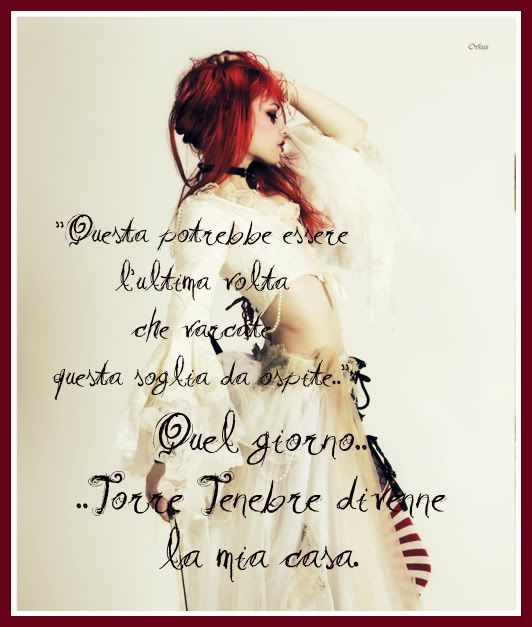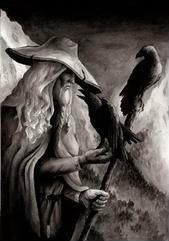
It is possible to trace the origins of the legend of the witches back to ancient Samnium and Rome when, in the 4th century BC ancient settlers from the shores of Magna Graecia came settled in the Samnium region, and brought with them their customs like the worship of the orgiastic feast of Cybele. When Ovid sang about the horrendous bloody child sacrifices, the saga – known already in the 13th century – spread rapidly throughout Italy and Europe in 1600. In Benevento, true place of origin of the legend, learned arguments were being held about it.
Other cities, had often gained an unhappy reputation because of the witches, but Benevento being the birth place of these legends rather than gain the evil reputation for its monstrous practices, has inspired poets and artists over the centuries. The legend was born when the belief of the existence of witches was associated with the echoes of mysterious orgies the Lombards preformed. The Lombards had made Benevento the capital of their vast southern Duchy. In the late VII century, faithful to their own national traditions, instead of converting to Catholicism, as was required of them they carried on the cult of Wotan, the father of the gods.
They gathered outside the city walls, around a sacred tree from which they hung the skin of a buck and between a run and the other, they shot at it with arrows and then ate a piece of it. The inhabitants of Benevento, being good Catholics were horrified and scared and to them these rites seemed demonic. Meanwhile descriptions of these rites transformed them into something wonderful.

The custom of these ceremonies ended because of the conversion imposed by Duke Romualdo II and its people. The Duke fearing that he could not defeat the Byzantine Emperor Constants, promised to Bishop Saint Barbato the elimination of these pagan practices in exchange for salvation. When the salvation miraculously came, and even after the demonic walnut tree was chopped down, the mysterious rumors continued to circulate. At that point the legend had already formed, and in it the warriors had been replaced by evil women dancing frantically around the tree, the cries of war had been replaced by the sounds of the raging orgy, and it was said that even the devil in the form of a buck took part, the morsel of buck skin was also replaced, in its stead there was a plentiful banquet.
The conquering Lombards heightened the splendor and prestige of Benevento by supporting literature and the arts. The city became a Papal enclave in the Kingdom of Naples, and host to various other civilizations, from the fervent and promising early middle ages to the light of the Renaissance, the legend continued to grow and to be enriched by facts, until finally in the Baroque age the legend reached its final version, which is the one we know today.
Around the magical Walnut tree at night two thousand or more witches congregate, each is guided by a demonic guardian – Martinello or Martinetto – who is at the same time lover and servant, and that, before the ride on their broomsticks, rubs his woman with a magic ointment, and there, by the light of the torches. They then worship the Devil who appears disguised as a buck and rewards the best witches and punishes the bad ones. The orgy begins and if a novice shows up who has given up her faith, the King of darkness will make her swear by the blood squeezed out of her left breast to be like all witches, to be at least once a month adulterous and murderous and sow unabated malice and hate, he then assigns her a Martinello and promises long life, prosperity and all sorts of good things.
 The summoning of Jesus and the Virgin Mary or the ringing of the bells of Matins and the cockcrow that announces the rising dawn dissolves this terrible scene. The fascination of the legend is expressed only in Benevento by an unknown and inexperienced seventeenth century painter. The painter in his simplicity has been able to inspire poets, writers and musicians from very different walks of life. Amongst the inspired we find the problematic author of “the flower,” the fourteenth-century Ser Durante and the merry Redi with “The Hunchback of Peretola”, S. Bernardino from Siena that in his passionate sermons asks with zeal for the extermination of all witches and Agnolo Fiorenzuola. Since a long time that Benevento legend has been part of the real literature, and music. Franz Xavier pupil of Mozart and Salieri with his composition “the walnut tree of Benevento” has inspired one of the most unique works by Paganini, entitled “the witches”.
The summoning of Jesus and the Virgin Mary or the ringing of the bells of Matins and the cockcrow that announces the rising dawn dissolves this terrible scene. The fascination of the legend is expressed only in Benevento by an unknown and inexperienced seventeenth century painter. The painter in his simplicity has been able to inspire poets, writers and musicians from very different walks of life. Amongst the inspired we find the problematic author of “the flower,” the fourteenth-century Ser Durante and the merry Redi with “The Hunchback of Peretola”, S. Bernardino from Siena that in his passionate sermons asks with zeal for the extermination of all witches and Agnolo Fiorenzuola. Since a long time that Benevento legend has been part of the real literature, and music. Franz Xavier pupil of Mozart and Salieri with his composition “the walnut tree of Benevento” has inspired one of the most unique works by Paganini, entitled “the witches”. But in Benevento, other than the interesting pictorial document and the erudite disputes that rarely left the city confines, something remarkable was needed, something that would be world famous that would match the greatest works of genius. That something - anybody can see that it is not an exaggeration- was to be the sublime liquor that Giuseppe Alberti created more than a century ago. Given the bewitching quality of this liqueur Alberti had no choice but to call it “Strega”

No comments:
Post a Comment